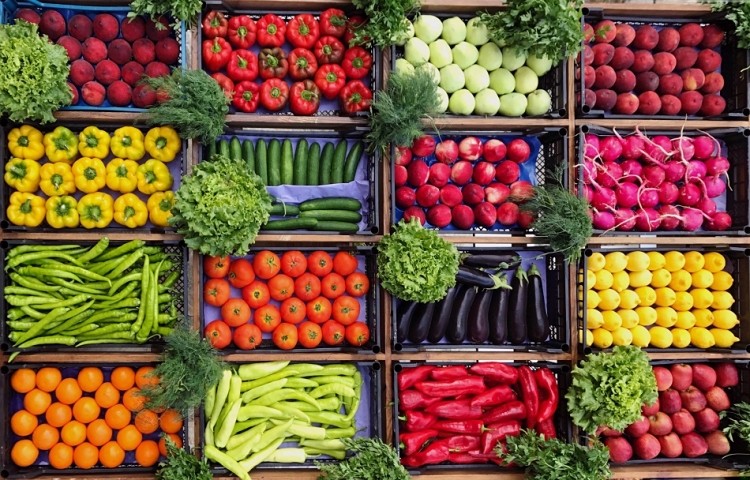By Ami Alaniz
In 2018, a near-silent war raged on in Congress as limited press coverage compounded with Republican in-fighting and Democrat stone-walling held the lives of millions of Americans in a precipitous position over a six-month period. The Agriculture and Nutrition Act, colloquially known as the Farm Bill, is a recurring bill that requires renewal every four to five years and encompasses federal nutrition and farming programs. The Farm Bill, with limited exceptions, has historically been a bipartisan effort since the incorporation of food assistance programs in the 1970s, creating near-equal stakeholders in the Republicans and Democrats. Typically, this pushes politicians to work jointly on both agriculture and food security funding programs. However, 2018 ended up being one of the exceptions, as the particularly fractious House Republicans faced unified Democrat opposition in both arenas of Congress — the House and the Senate. The keystone federal food assistance program, the Supplemental Nutrition Assistance Program (SNAP), became endangered. The consensus that led to the passage of the 2018 Farm Bill was built in Congress through political pressure, a temporary and forced means to an end, rather than a step toward lasting resolution. The result was a win for protecting SNAP, but one that left little political impression: attempts to affect SNAP eligibility and funding have been repeatedly attempted by the same stakeholders of the Farm Bill in the time since its passage.
The Farm Bill is a massive legislative effort that houses short-term projects, as well as ongoing ones. The House and Senate Agriculture Committees debate, draft, amend, and pass separate bills and these both go to a conference committee composed of Senators and Representatives that combine the two bills into one. [1] This bill is then voted on by the House and Senate and signed by the President before the USDA ultimately implements the Farm Bill. [1]
The composition of the Farm Bill, however, was the point of contention in 2018 — “[about] two-thirds of the farm bill spending [going] to nutrition programs such as SNAP.” [2] Formerly known as food stamps, SNAP, is a federal food assistance program for low-income families and individuals. It is administered by the USDA and at the state level — the California iteration is known as CalFresh. Due to its nature as an assistance program, SNAP is regularly attacked from one of two ends: participant eligibility or funding. Eligibility is partially determined via work requirements: an independent, able-bodied individual between the ages of 18 to 49, with no dependents, must work at least twenty hours per week. [3] To increase the weekly work requirement or broaden the age range would affect millions of Americans, which was a massive point of contention stalling the consensus-building process.
In 2018, the Democrats held a majority in the Senate while the Republicans held a majority in the House. In the House, this meant that Democrat versus Republican politicking had given way to intra-party fighting amongst the Republicans. In May, voting was held for the House (Republican) version of the Farm Bill that mainly attacked work SNAP requirements and, therefore, eligibility. In this case, it targeted able-bodied adults without dependents (ABAWD). It increases both the age range (from 18-49 to 18-59) and the weekly work requirements (from 20-25 hours per week) while also taking away states’ ability to waive work requirements in areas disproportionately affected by unemployment. [3] These changes would have left millions of Americans ineligible for SNAP and facing food insecurity.
While talks concerning the 2018 Farm Bill had occurred as early as 2017, the situation began in May 2018 when the House failed to pass their version of the bill with SNAP restrictions — it was a 213-198 vote. [4] What was originally slated to be an easy, Democratic win with their majority, turned into an explosive moment as Republican voting blocs pointed fingers at each other and began making demands. The small but critical-for-majority group of “extreme” Republicans demanded to vote on controversial (and unlikely to pass) immigration legislation before any further voting on the Farm Bill occurred. [4] Quietly, in June, the Senate easily passed its version of the bill while the bickering continued in the House. Eventually, on September 30, 2018, the 2014 Farm Bill that was up for renewal expired. Its death came and went quietly with limited press coverage and a decision to continue to ignore the issue in the House of Representatives.
Then came the midterm elections and with them the farmers, and the politicians regretted letting the bill stall. By this point, trade wars initiated by the Trump Administration had severely affected them — losing the safety net of the Farm Bill left many concerned and even more angry. The key agricultural states put an extreme amount of political pressure on all midterm candidates. Democrats were blamed for stalling the Farm Bill, and Republicans for being obstinate. After the “blue wave” occurred, Congress began to scramble and feel the heat from the farmers. House Republicans, particularly the ones who had lost their seats to Democrats, had two choices: get the House version of the bill passed, or delay further and let the Democrats control it entirely. In November, the House passed the bill by a very thin margin, the two versions were quickly reconciled with the final version leaving SNAP intact. [5] It passed easily through Congress (386-47 in the House and 87-13 in the Senate) and was signed by the President in December. [5]
The stakeholders in this political showdown were Congressional Democrats, House Republicans, American Farmers, the Trump Administration, and the USDA. Political pressure in the form of midterm elections influenced most of the proceedings. So, while the power lied in who had the most influence in the Farm Bill policymaking and implementation, the relative political strength among stakeholders was variable and shifted as the Farm Bill expired and sat in Congress. Politicians at the time were keeping an eye on midterm elections and staging their politics accordingly. While it was ultimately political pressure that protected SNAP and enabled the bill to be passed, the consequences of midterms and allowing the Farm Bill to remain dormant were the tools that turned the gears.
Democrats, in this instance, formed a united front in Congress. Democrats both in the House and the Senate agreed through action that SNAP was to be left alone in the Farm Bill renewal, which fit with their pattern of voting in favor of social assistance programs. However, the Senate held a Democrat majority and the House a minority, so the power distribution through Congress was uneven — unable to utilize it in the short term, but theoretically controlled the final outcome. After midterms and the “blue wave,” this power shifted with Democrats ready to replace Republicans in the House. Democrats could almost control the passage of the Bill after midterm results were in. There were two options: Republicans could acquiesce and work on the bill now, or working on the bill could commence when Democrats controlled both parts of Congress. Either way, protecting SNAP was nearly guaranteed by this point.
House Republicans played a more significant role compared to their Senate counterparts due to their majority and the controversy surrounding the House version of the Farm Bill. However, this power was severely weakened due to intra-party politicking as politicians switched their votes around in hopes of achieving their mid-term re-election goals. Certain factions wanted to vote on controversial, unrealistic immigration legislation and were willing to hold the bill hostage until they could vote. This led to a blindside that seemed to serve Democrats, but really only highlighted the lack of unity within the party. This provided its own unique pressure as the majority of House Republicans scrambled to get more votes before initiative fizzled out and the bill went on the backburner. Later, after the midterms, there was a new pressure but still a lack of unity. While some Republicans switched their votes over to prevent a Democrat-dominated Farm Bill, it only passed with a narrow margin. [5] There was a distinct lack of unity throughout the Farm Bill process among House Republicans until the very end, when it became majority Democrat (after the midterms).
American Farmers, on the other hand, grew in power gradually as the bill expired and then sat in Congress. They were affected by the trade wars brought about by the Trump Administration, a stakeholder that was also pressuring Congress to both include the SNAP restrictions and get the bill passed immediately. This group was already having issues before the congressional back-and-forth let the bill expire. Upon expiration, several programs that provided subsidies and safety nets to farmers lost funding. These two events led to a period of uncertainty for farmers and they responded by utilizing their platform to pressure the politicians into making a move. So while SNAP was the issue at hand with respect to the bill as it sat in Congress, it was farming that provided the political pressure to get everything done and passed.
The Trump Administration’s role in this process was its ability to add pressure, insisting on the bill passing and being over and done with. On the other hand, the administration supported SNAP restrictions publicly and through prior administration-initiated legislation. These two opposing demands only increased the pressure on Congress — almost brutally due to the limited mainstream press coverage this bill received. However, no direct actions were taken by the administration beyond tweets until the President signed the final version of the Farm Bill. As a stakeholder, however, the Administration’s stance on SNAP would prove to be more troublesome in the period after the passage of this bill.
While the USDA does not hold any power until the Farm Bill is passed, it becomes the executor of the bill once it does. This lends a lot of power because the Farm Bill will ultimately serve as a guideline, not a set of clearly defined rules and regulations, when implemented. While federal employees are not able to advocate, key figures in the USDA were in support of the SNAP restrictions. [5] This would have clear implications beyond policymaking in Congress in 2018.
Success within the context of this bill can be described as who was able to get their way with respect to SNAP. In this instance, Democrats protected SNAP and American farmers were able to get resolution in the bill with their funding and protections in place. Within the larger political ecosystem, however, this was not successful as it held little long-term political impact for SNAP. There have been at least four attempts to restrict SNAP funding or SNAP eligibility. [6] On July 24, 2019, the USDA announced the most recent attempt to restrict SNAP — a proposal that outright refuted in the previous year’s Farm Bill by revising the categorical eligibility in SNAP .[7] Temporary Assistance for Needy Families (TANF) programs help families in the short-term; the current system in place at the state level allows TANF recipients to be categorically eligible for SNAP. The revisions the USDA sought to make were to take away this eligibility — and essentially make these families start over from scratch and apply for SNAP benefits anew. [8] The time between families realizing these changes, understanding that they need to apply for SNAP, apply for SNAP, and wait for approval would be lengthy.
Open to public comment for sixty days, these revisions were estimated by the USDA itself to involve three million people losing their SNAP benefits and put 265,000 children at risk for losing their subsidized school lunches. [7][8] Under the current system, SNAP eligibility allows students to receive discounted or free school lunches — their families having to apply for SNAP and wait for approval before these benefits are available. After the comment period was closed early, more data was gathered, and it reopened from October 18, 2019 to November 1, 2019. [8] This, just like the House version of the Farm Bill, was endorsed by the Trump Administration. Like all other attempts to restrict SNAP, the guise of restriction was one of “self-sufficiency,” a hollow proclamation in an economy that has seen the proliferation of homelessness and food insecurity in a landscape of wage stagnation and an obscene wealth divide. And, much like in the 2018 Farm Bill, Democrats opposed this while farmers waited to see how this affects their bottom line in a time of trade wars and Farm Bill-specific subsidies.
Consensus regarding SNAP policy in the 2018 Agriculture and Nutrition Act was ineffective and a consequence of political pressure rather than bipartisan effort. To be more effective, there needed to be a better attempt by all sides to have a dialogue instead of grandstanding for votes or personal agendas — as has historically been the case with the Farm Bill. By letting the Farm Bill expire and sit, it created unnecessary tension and pressure. By the time the midterm elections were done and the farmers had grown restless, it was too late for any effective communication to occur. Had there been effective communication, more Republican interests could have been represented. While the House version that ultimately passed would have never made it past the Senate with its SNAP policies, the resolution of the two bills would have had more time for negotiation. This would have still resulted in dissatisfied parties, but perhaps it would have created an impactful SNAP policy that would not have been subverted less than a year after it was passed.
References
- Pingree, Chellie. “Farm Bill Process.” Congresswoman Chellie Pingree, https://pingree.house.gov/sites/pingree.house.gov/files/wysiwyg_uploaded/farm bill_handout.pdf. Accessed 23 Apr. 2008.
- “Farm Bill Primer.” Food Research & Action Center, 2017, https://frac.org/research/resource-library/farm-bill-primer.
- “SNAP Work Requirements.” USDA, 29 May 2019, https://www.fns.usda.gov/snap/work-requirements.
- Thrush, Glenn, and Thomas Kaplan. “House Farm Bill Collapses Amid Republican Disarray.” The New York Times, 18 May 2018, https://www.nytimes.com/2018/05/18/us/farm-bill-collapses.html.
- Stein, Jeff. “Congress Just Passed an $867 Billion Farm Bill. Here’s What’s in It.” The Washington Post, 12 Dec. 2018, https://www.washingtonpost.com/business/2018/12/11/congresss-billion-farm-bill-is-out-heres-whats-it/.
- Fadulu, Lola. “Trump Administration Unveils More Cuts to Food Stamp Program.” The New York Times, 4 Oct. 2019. https://www.nytimes.com/2019/10/04/us/politics/trump-food-stamp-cuts.html.
- Fessler, Pam. “3 Million Could Lose Food Stamp Benefits Under Trump Administration Proposal.” NPR, 23 July 2019, https://www.npr.org/2019/07/23/744451246/3-million-could-lose-food-stamp-benefits-under-trump-administration-proposal.
“Proposed Rule: Revision of Categorical Eligibility in the SNAP.” USDA, 24 July 2019. https://www.fns.usda.gov/snap/fr-072419.





Be First to Comment